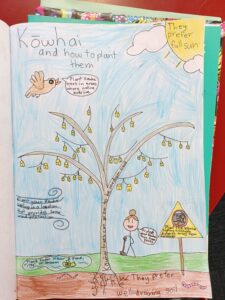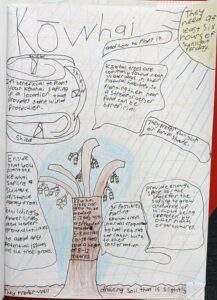Toimata Foundation is now in the second year of a three year partnership with Te Uru Rākau to invest funding from the One Billion Trees initiative. The Enviroschools network made fantastic use of the funding last year and we have confirmed funding for 11 regions in 2023. The funds have been allocated to:
- The four regions most impacted by the cyclone events – Te Taitokerau/Northland, Tāmaki/Auckland, Te Tairāwhiti/Gisborne and Te Matau ā Māui/Hawke’s Bay are targeting the funds to impacted schools and communities to support urgently needed environmental recovery and restoration.
- Five regions – Waikato, Taranaki, Wairau/Marlborough, Te tai o Aorere/Tasman and Ōtākou/Otago – are distributing funds (or in the case of Taranaki, plants) to support restoration action projects led by schools.
- Two regions – Te Tai Poutini/West Coast and Murihiku/Southland – are channelling support to involve schools and the wider community in a specific large-scale restoration project underway in their regions.
The following updates provide some indication of how funds have been used so far, with other updates imminent.
Tāmaki Makaurau/Auckland – restoration mahi in impacted communities

Learning about Living Landscapes together.
This region is focused on working with their Enviroschools network and community partners to:
- deepen the application of the Enviroschools Living Landscapes Theme Area
- strengthen relationships with iwi owned and managed nurseries
- support the region’s Enviroschools ECE and schools to take time to plan for effective habitat restoration projects, outdoor classrooms, and connection to place.
To date, the Tāmaki Enviroschools team has run six professional development sessions for lead teachers and advisors at ECE and primary, intermediate and secondary schools.
Orders for plants have been placed with local nurseries, including businesses owned and managed by iwi. These nurseries cover all the ecological areas of the region and ensures the species available to ECE and Schools are eco-sourced.
A survey for participating schools has been developed with the intension of helping them plan for planting in their centre or school grounds. This allows time for considered design, and the best outcome for the plants, the tamariki and the kaiako, who are under considerable stress at this time.
Bailey Road School have been busy rejuvenating their Native Tree trail.
Early Childhood Education centres progress to the end of term 3: Nineteen kindergartens have started planning their living landscape projects using the One Billion Trees funding. Initial steps include identifying suitable plant species for butterfly, moth, bee (including native bees) insect and lizard habitat, and planning the layout of the planted area. Plants will be supplied by Pourewa, EcoMatters, Te Whangai and Kaipatiki nurseries.
Schools: One Intermediate, one secondary school and 17 primary schools have expressed interest in the One Billion Trees initiative. The schools are located throughout the wider Auckland region, with the majority in the Central South area. Suitable species have been identified for the sites within the schools’ grounds and ground preparation plans are underway. Planting will take place in Winter 2024.
Te Tairāwhiti/Gisborne – restoration mahi in impacted communities
- Kāiti School in Gisborne have been on a mission to learn about native trees, eco-source seeds and get planting on their school grounds. Students ventured up Titirangi maunga to collect seeds from rengarenga, tarata, karaka, mānuka, pūriri and whau. The seeds will be germinated, and seedlings grown on by the students, then donated to community planting projects. In their school grounds the tamariki have recently planted and mulched 140 rākau.

Teamwork!

Sucess in seed collection.
- Makaraka School had a great day out at Whangara Farms in March collecting native seeds from a fenced off ngahere – they had a wild adventure given there were no paths! The students then went to the Women’s Native Tree Project Trust nursery to learn how to process the pūriri, kohekohe, nikau, titoki, kohia, kawakawa, toetoe ūpoko tangata and kaikomako. They have been going to the nursery every few weeks to pot up the seedlings and learn how a native tree nursery works. The students inspired Whangara farms to set up their own native nursery to plant out more of their farms.
Te Matau ā Māui/Hawke’s Bay – funding to impacted schools and communities
This region has identified four school communities that are undertaking vital restoration mahi following the flooding experienced by the region. We have the following updates from each:
- Patoka School – our community is still very much in recovery mode after Cyclone Gabrielle. We would like to look towards the end of Term 4 to organise a planting day at Ball’s Clearing to make use of the trees and put some trees back into the environment.
- Hereworth School – we have needed to defer tree purchasing and planting. Our gulley was heavily impacted, and we have had to do more clearing than what was first thought. Planting may take place later this year or potentially need to wait until 2024.
- Twyford School – Year 6 students are leading a tree planting project linked to the development of our new student garden. The students have maintained a vegetable garden at school in liaison with Enviroschools over the last five years. At the end of 2022 it was decided to move this plot from its current site near the Twyford & Raupare Community Hall to an area along our fence line where native plantings have been established. During Cyclone Gabrielle many of these plantings were damaged and destroyed. Funding from the One Billion Trees project will allow us to repair the damaged area and plant out the back fence line of our school. Trees will also be established around our garden to support the sustainability of the area.
- Omakere School – this school has undertaken two projects, beach restoration at Aramoana/Pourerere and caring for the Kahikatea Stand on their school grounds.
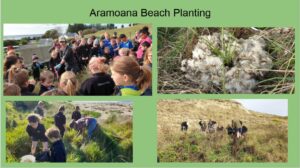
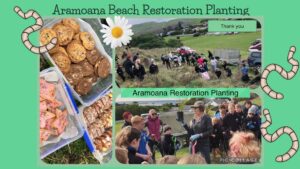
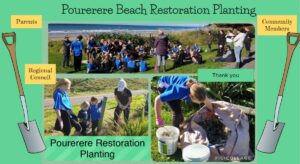
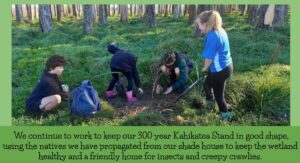
Te tai o Aorere/Tasman
Students at Wakefield School in Tasman had the idea to make a propagation shed for growing the trees needed for their bird cafe. They want to encourage the native birds to feed on the trees and for lizards to come to the school and feel safe in this natural environment. Read their story written by 2 students here.
Wairau/Marlborough – funding to school projects
Recipient schools have been researching which rākau will best support native birds and insects from local ecosystems. Planting is planned for Term 3. See here for how this has been initiated in the classroom at Waikawa Bay School.
This article from Stuff captures some of the action undertaken by students and community from Whitney Street School and Renwick School
Te Tai Poutini/West Coast – funding to school projects
Wadeson Island Restoration: An action fund was offered out to the Enviroschools network, and three schools were selected. The focus is to grow trees for a local habitat restoration project at Wadeson Island in Hokitika. Kokatahi-Kowhitirangi School, Kaniere School and Hokitika Primary School will be sharing the fund to purchase growing supplies for their native nurseries, bring in experts in native plant propagation and visit the restoration site for learning and planting activities.
Otago – funding to school projects
Otago schools were invited to apply for funding to advance ecological restoration projects, either on their school grounds or community projects they have a long-standing involvement in. The following six schools/kindergartens have been funded in 2023:

Alexandra Primary School planting programme.

Waiwera South School students construct their shade house.
- Waitaki Boys High School – transport from Oamaru to Ōhau for a joint planting day with Waitaki Girls High School, Volunteer Student Army and Ōhau Restoration Group read more here
- Clinton Primary School (Clutha) – planting native trees on school ground. Planting plan developed by students.
- Goldfields Kindergarten (Clutha) – developing the native tree area at the centre, learning more about Te Ao Māori concepts including the atua. They have more trees to purchase and more planting to do.
- Te Kura O Take Kārara (Wānaka) – plant more native trees on the school grounds. Planting will take place in spring.
“Our project is adding to the shade trees which are around our school’s bike track. This is an area which is utilised not only during school hours by our tamariki but after school and in the weekends by our wider community. It is proving to be a very popular place for families to congregate. We went out to the bike track and decided where a good place for more shade trees might be – looking at where the sun was and how it travels across the sky. They were shown where the trees from last year’s restoration project had been placed and what these trees were.” – Te Kura o Take Kārara
- Alexandra Primary (Central Otago) – extending the planting for their school ground reforestation project.
- Waiwera South School – building a shade house and watering system to propagate eco-sourced seeds for their restoration project by the Waiwera River. The older students just completed a big day potting up native seedlings which will be propagated and grown in their new propagation shed. This shed is nearing completion due to the help/assistance of the funding. In September the school will undertake their annual stream testing and planting day on their local Waiwera River with seedlings and seeds potted and grown from last year’s local seed(ling) sourcing days.
Murihiku/Southland – Waihōpai Planting Programme:
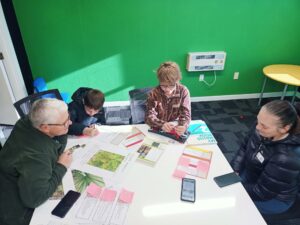
Learning about the different plant species at Waihōpai.
As they did in 2022, the Enviroschools Team at Environment Southland are using 1BT funding to support the involvement of schools in the Waihōpai Planting Programme. This is a long-term project initiated by the regional council, that involves working with the wider community to restore the health of the Waihōpai River.
So far this year, the team have been working with enviro-leaders in local primary schools to develop plant identification signage.
